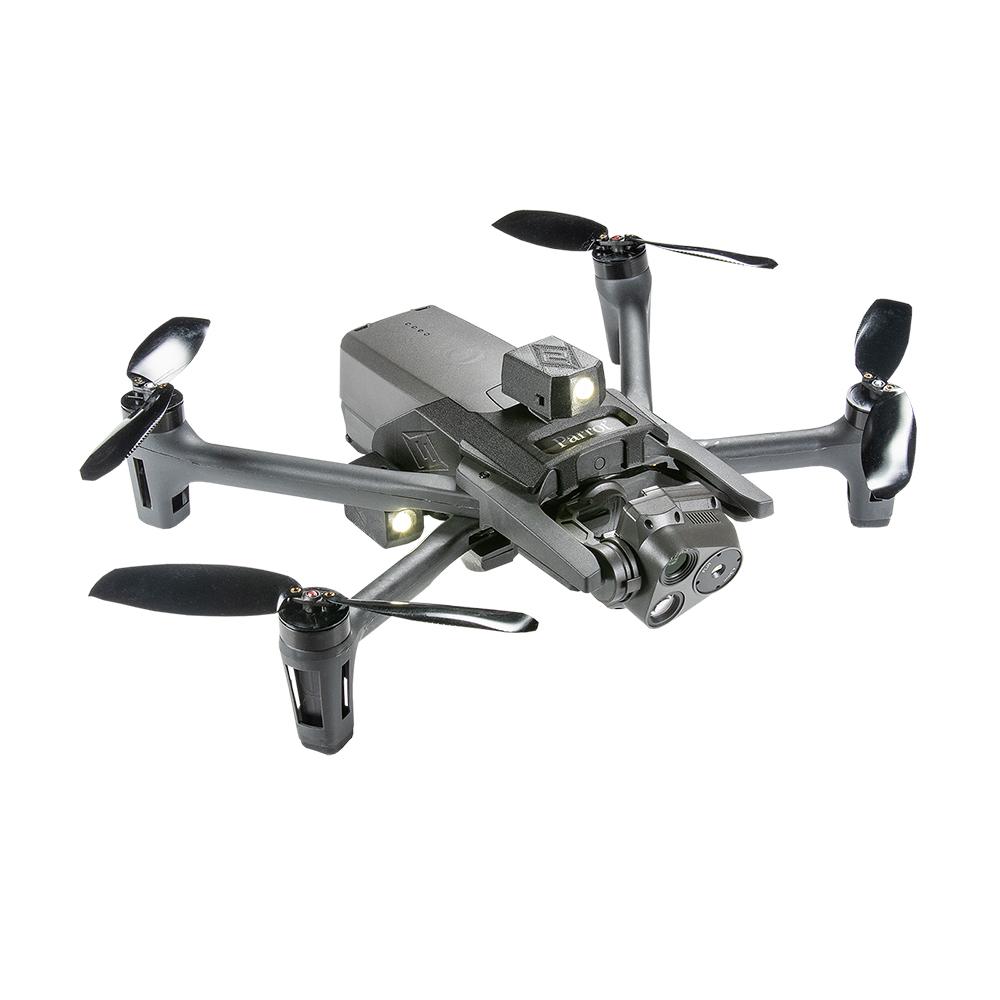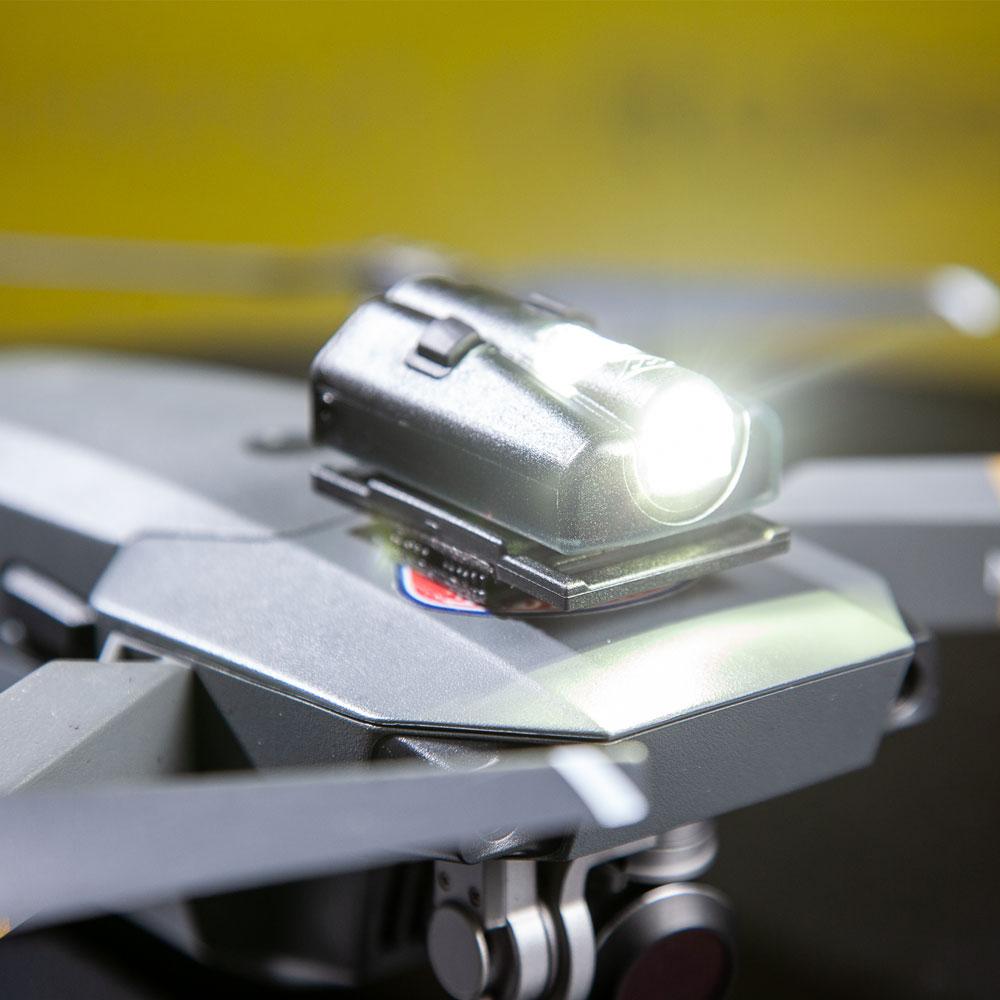Shop by Industry
Industries we support...
Products
START SHOPPING...
EXPLORE by category
Product Series
Resources
Contact
Find a Dealer
This guide for mounting lights on drones covers the effects of adding lights on your drone, safety considerations and benefit of dedicated mounts.
Lights on drones are really beneficial, no matter if you are using drones for inspecting bridges or structures, light painting for photography, or searching for a lost person in the woods. Lights expand your drone's capabilities. Whatever your nocturnal flying needs are, new lightweight, compact LED lighting makes it possible to see from better and be seen from other pilots in the sky.
How you mount lights on your drone has significant effect on how your drone performs, its overall life and the safety of every flight. How you mount the lights also determines the success of your missions. Lights poorly mounted may move during flight or fall off the drone. You may not be able to see what you are looking for if lights aren't positioned correctly on the drone.
Safety is the number one priority. You need to take careful consideration to how you mount lights onto your drone. Attach lights securely or it may adversely affect the performance, capabilities and safety of your drone.
When attaching lights to the drone or UAV, you want to minimize the effect on the drone's performance. The weight and drag of the lights, no matter how minimal, will affect the runtime, performance and safety of the aircraft. When attaching lights on the UAV, there's several factors to consider.
Lights, or anything else, mounted to the drone, will decrease the runtime of the drone. It's simple physics. For any given drone, battery output is essentially a fairly fixed value. An increase in weight will result in a decrease in runtime.
Now, of course, there are a bunch of other factors that can influence this simple equation like mass, weather, battery age, altitude, air density, etc, but this gives you the basic relationship between battery output, runtime and weight.
The additional mass of the lights will also affect the aerodynamics of the drone as well. Lights increase drag, thus increasing the amount of work the motors have to do to maintain the same speed or go the same distance.
You may think, "My lights are tiny and lightweight, so they won't affect the performance that much." In perfect conditions, it might only affect runtime by a little bit. But if you fly out 4000' and you need to fly back against a strong headwind, there might be a considerable decrease in runtime caused by the extra weight, mass and weather conditions. That miscalculation might have you running out of power and crashing before safely returning home.
Positioning of the lights on the UAV is critical as well. It's important to mount lights as close the center of gravity of the aircraft as possible.
Lights mounted at the ends of the prop arms or away from the center of gravity, will have a greater effect on the maneuverability of the drone than if they are positioned close to the body.
A good analogy for this is attaching 10 lb weight to a 10-foot pole. If you place the weight near your hand and swing the pole back and forth, you can easily control the weight and change in direction. If you place the weight at the end of the 10' pole and swing it around, you will find it much harder to change direction and control the pole.
Weight positioned at the outer ends of the prop arms or landing gear will have the same effect on a drone. Every time the drone changes direction or goes in and out of rolls, the motors will work harder to make those adjustments than if the lights were positioned inward, close to the body of the drone.
Outward positioning of the weight, coupled with extreme maneuvers or adverse conditions will the drone past its capabilities. This can ultimately result in failure.
Mounting light in an unbalanced manner will cause excessive stress on the prop motors to keep the UAV balanced and flying properly. Lights mounted too far fore or aft on the craft or unevenly to either side will force the motors to work harder than if all the weight was even.
In the short run, you will compromise the performance of the drone that could lead to failure. In the long run, the motors will burn out faster.
Lights can be mounted onto the drone with dedicated mounts, attached with Velcro or even taped onto the UAV. The #1 consideration is that the light is absolutely secure and is NOT going to fall off of the craft while in flight.
A tiny 1.5 oz light falling from 100’ in the air can potentially injure someone on the ground. Even worse, a light that comes loose from the drone, hits the props and causes the whole drone to fall out of the sky. That could result in significant injury or damage to anyone or anything below it.

Dedicated drone light mounts that are specifically designed for the drone and the light are the best option. They provide the most secure attachment for the light to the UAV. The lights can also be positioned in multiple directions for different lighting needs.
Hook and loop or velcro is a viable solution for small, lightweight lights. This has enough holding power for very lightweight lights and can be placed in various places on the drone.

Whatever mounting option you use, be careful that the attached light does not interfere with the props, sensors or antenna of the UAV. Poor placement may result in the pilot losing connection with the UAV while in flight. Lights covering sensors prohibits the drone to land or avoid structures.
It's also important to periodically check the adhesive of the Velcro to the drone and to the light. Over time, pulling the light off of the drone may degrade the adhesion of the glue, causing it to fail.
Flying your drone at night opens up a whole new world of opportunities. If it’s for inspection, photography or search and rescue, drone lighting can expand the capabilities of your UAV. Try these mounting techniques for optimum performance and the best experience.



Enter your details below to save your shopping cart for later.